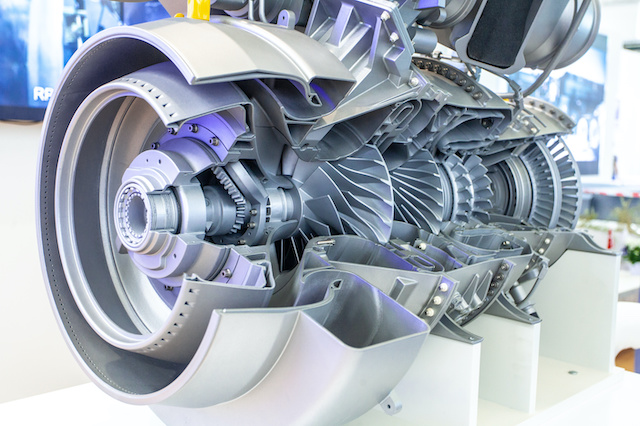
Like all INCONEL nickel alloys, alloy 600 has outstanding corrosion resistance and a range of other chemical properties that make it suitable for use in the harshest and most demanding environments. But this particular superalloy is especially known for its mechanical characteristics. These make it a versatile choice for a broad spectrum of applications.
In this post, we’ll take a close look at these characteristics and how they are affected by the different ways in which alloy 600 can be treated.Strength in combination
The primary components of INCONEL alloy 600 are nickel (72%), chromium (14–17%) and iron (6–10%). This combination is the key to its strong performance and versatility of application.
The proportion of nickel in alloy 600 has been calculated to make the most of nickel’s innate properties – ductility, toughness and resistance to corrosion – without falling prey to stress corrosion cracking. This is a common problem for austenitic nickel-chromium alloys in environments where chloride is present. Chromium enhances alloy 600’s oxidation resistance, while a small but significant amount of iron gives it extra strength.
This means that, even among nickel superalloys, INCONEL alloy 600 displays excellent performance in hot, oxidising and corrosive environments. Depending on use and treatment, it can be used from cryogenic temperatures all the way up to 1095°C.
Tensile strength
Tensile strength is a key characteristic for use in high-stress, high-pressure applications. It refers to the maximum stress value a material can withstand without breaking when stretched. Tensile strength is expressed in kilopounds per square inch (ksi). The nominal tensile strength of INCONEL alloy 600 ranges from 75 to 220 ksi. However, this depends on a number of factors, such as condition and form.
To achieve the maximum tensile strength of 220 ksi, alloy 600 needs to be subjected to heavy coldworking, which is usually combined with heat treatment.
Yield strength
Another important property is yield strength. While tensile strength measures the point at which a material fractures under stress, yield strength refers to the point at which it begins to permanently deform and can no longer regain its original shape and size.
Alloy 600 is often annealed to reduce hardness and make it easier to form. This is a process in which metal is heated to a specific temperature, held there for a period of time and then allowed to cool again. This process also improves corrosion resistance. In its annealed form, alloy 600 has a moderate yield strength of 25–50ksi. Again, this range will depend on the metal’s form and condition.
As with tensile strength, however, yield strength is significantly improved with heavy coldworking. For example, alloy 600 wire can attain a yield strength of 150–210 ksi following cold-drawing and spring tempering.
Fatigue strength
Tensile and yield strength are two factors to consider, since they affect the operative life of a component and whether it is likely to fail suddenly or gradually. Fatigue strength is another crucial consideration.
Fatigue strength is the maximum stress the component will be able to endure when subjected to cyclic loading before sustaining damage at the molecular level. This damage leads to cracking, which eventually fractures the component.
Fatigue is a particular risk in corrosive environments, and it’s easy to overestimate the number of cycles needed to start the process. When a relatively small number of cycles will pass before the material begins to crack and then fail, this is called low-cycle fatigue. Usually, this results from the repeated application of the same cyclic stress below the material’s yield strength value. Many rapid cycles of fluctuating stress lead to high-cycle fatigue.
While INCONEL alloy 600’s yield and tensile strength are substantially affected by its treatment, this isn’t the case with fatigue. Alloy 600 continues to display consistently good fatigue strength with regard to low-cycle fatigue, regardless of grain size – which is related to heat treatment – and it’s not affected by changes to the other mechanical properties. The only situation in which the fatigue life of the component will vary is with high-cycle fatigue.
Impact strength
Impact strength – the ability to withstand collision without cracking or deforming – is an area in which INCONEL alloy 600 excels. Impact strength is measured in foot-pounds, and alloy 600 offers a strength of 160–180 ft-lb per 13 mm of plate thickness.
Alloy 600’s impact strength is particularly impressive for two reasons. One is that this alloy is very light – a component made with alloy 600 can be up to 40% lighter than one made with a comparable metal. Another is that this strength remains stable at a wide temperature range. While metals typically become brittle at cryogenic temperatures, this isn’t the case here.
Operative temperature
INCONEL alloy 600 resists embrittlement in extreme cold, but it also displays the same quality at very high temperatures, even with prolonged exposure. This means that it is particularly resistant to creep: a type of failure in which a metal component gradually deforms over time before failing completely.
It is worth noting that very low temperatures can have an effect on some of alloy 600’s properties. To take one example, a cold-drawn alloy 600 rod displays a 20% reduction in tensile strength when subjected to cryogenic temperatures. However, as noted above, its impact strength will remain virtually the same.
Applications
In view of its impressive operative temperature range, it’s no surprise that INCONEL alloy 600 is often chosen for applications in high-temperature environments. Its consistently good mechanical properties and stable performance mean that a component made with alloy 600 will have a longer functional life and be much less prone to catastrophic failure. It’s a safe and cost-effective choice in many situations.
This is a particular asset in applications where conditions are harsh and safety is critical, such as the chemical processing and petrochemical industries. INCONEL alloy 600 is also a stalwart of the nuclear industry.
In summary, INCONEL alloy 600 is a great all-round performer in a wide range of conditions. If you’d like to discover more about this alloy and its potential applications for your next project, just get in touch.
 Mechanical Properties of INCONEL Alloy 600
Mechanical Properties of INCONEL Alloy 600

